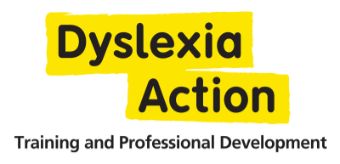The Dyslexia Compass
Lucy Howes
Martin Bloomfield of York Associates has been leading on a European Union funded project called The Dyslexia Compass, a tool to “translate” dyslexia measurements and assessments across Europe. Here he tells us about the outcomes of his research.
Dyslexia knows no barriers. Or so we would like to think. It knows no borders, it knows no countries, and it knows no race. Dyslexia is neurological. Dyslexia is hereditary. Dyslexia is human. Dyslexia is neither political nor religious. Dyslexia is ethnically neutral. Or so we would like to think.
Consider the following question: if a child is dyslexic, is she dyslexic everywhere she lives? Can she “lose” her dyslexia when her parents simply move house to follow work, or to escape difficult socio-economic or political situations at home?
One would imagine not. But The Dyslexia Compass shows that this isn’t obviously the case. And it’s not obviously the case because different countries, different cultures, and different assessment bodies, cannot agree on what dyslexia is or how to measure it. The child’s The Dyslexia Compass neurology may not change, it’s true. But her diagnosis of dyslexia might!
The Dyslexia Compass was a European Union funded project, born out of a recognition that globally, people with dyslexia are being under-served – educationally, socially, economically and politically – and that this could partially be traced to a lack of international (and in many cases national) agreement on how to identify and measure levels of dyslexia.
Without a consistent methodology for measuring dyslexia, coupled with a consistent understanding of what is being measured, on the one hand, individuals moving from one region to another have been known to “lose” their dyslexia recognition, as different states recognise different things; while on the other hand, targeted support and intervention will be unreliable, with resources that cannot be consistently and universally agreed upon being allocated to services that cannot be consistently and  universally agreed upon. And this isn’t simply a concern for the education system, as studies indicate a strong connection between dyslexia, academic under-achievement, and unemployment, poverty, trauma, substance abuse, homelessness, mental health issues and suicide.
universally agreed upon. And this isn’t simply a concern for the education system, as studies indicate a strong connection between dyslexia, academic under-achievement, and unemployment, poverty, trauma, substance abuse, homelessness, mental health issues and suicide.
The economic costs of undiagnosed dyslexia have also been the subject of numerous studies, and run into billions of pounds per year. Where different regions are providing differently for dyslexia based on differently perceived numbers of dyslexics, the natural conclusion to draw is that inequalities will increase, and the aforementioned social problems associated with poorly-served dyslexia will only become more deeply ingrained.
Within the United Kingdom alone, dyslexia provision is fragmented, with each of the constituent nations offering different help through structures that are not always satisfactorily “joined up”.
In Wales, for instance, each of the 22 authorities offer different support at Primary and Secondary school; diagnostics are routinely carried out in English but there is no specific Welsh-language testing; and there is not one centrally (and universally) recognised dyslexia organisation to serve the whole country.
Looking at Britain as a whole, figures for how many dyslexics there are range between 4% of the population estimated as having “severe” dyslexia to a general consensus of 10%, possibly rising to 15%, being on the dyslexia spectrum. The difference between 10% and 15% of the UK population (5%) is roughly 3.35 million people. This is more than the combined populations of Birmingham, Leeds, Glasgow, Sheffield, Edinburgh and York, who may or may not have dyslexia, depending on which figures we accept. In Germany, each federal state measures the number of dyslexic people differently (from just over 1% of the population to over 15% of the population). In Bavaria dyslexia has been labelled an “incurable illness”. This is not a label applied in many other German states. And interestingly, in the Netherlands, while the Dutch Ministry of Education showed that in primary schools, between 10% and 19% of the students had a dyslexia statement, and in pre-vocational schools about 20% of the final exam students had dyslexia, one study revealed that only about 5% of minority ethnic children were regarded as dyslexic. This could be down to many factors, for instance cultural factors or language bias, but without any studies to show what those factors are, all figures have to be taken sensitively, and the overall picture of dyslexia in the Netherlands has to be viewed with caution.
Transnationally, the European Dyslexia Association estimates that between 5% and 12% of the population of Europe is dyslexic, while the European Commission released a report in 2013 stating that a mere 3.3% of the block’s population are dyslexic. As we can see, the disparities are significant. What is clear from the figures – dry as they may seem to some! – is that there is something approaching an international crisis in dyslexia awareness. Different “official” bodies do not agree on what dyslexia is. Different national bodies measure dyslexia differently, arriving at wildly different conclusions regarding how many people have the condition. There is complexity and confusion in the figures because internationally, no one has apparently got to grips with what they are measuring, and how to measure for it. And finally, there is no agreement on what constitutes best practice when assessing children for dyslexia. Something, clearly, needed to be done.
The Dyslexia Compass research focused mainly, though not exclusively, on Norway, Denmark, Sweden, Romania, Croatia, Germany, Austria, Spain and the UK. While not every European country is included in this list, there is at least a broad selection from both EU and non-EU nations, and from the north, the south, the east, the west, and central Europe. This allowed participants in the project to draw reasonable conclusions about the broad applicability of the results to the continent as a whole. Any argument saying that the differences are reflections on national orthographies fails when confronted with countries such as Germany, Romania and the Scandinavian nations, who each show considerable variation in figures within their own borders, among children who speak the same language; and Ghana, Hungary, Ireland and the Czech Republic, who don’t share similar orthographies but whose reported figures all hover at a remarkably similar level (approximately 10%). In other words, the differences are down to measurement criteria, not language.
Part of The Dyslexia Compass’s research was to examine what it is that different diagnosticians have been measuring, how they’ve been measuring them, and indeed why they believe it’s important to measure these things at all. The results are enlightening, if sometimes shocking.
In terms of the tests that practitioners use, the UK is way ahead of its European counterparts, with the possible SASC approved tools covering many pages
Norway, by contrast, uses only one tool and Romania has no standardised testing mechanisms at all. The overlap of how diagnosticians in different countries test for dyslexia is, therefore, negligible. In a pan-European survey of five different countries, what the practitioners were looking for differed in interesting ways, too.
So, while all respondents mentioned an interest in various types of “literacy deficit” and phonological markers as being important in assessing for dyslexia, only four showed an interest in working memory, three (and in each case three different groups of respondents) showed an interest in family and social context and background, rapid automating naming skills, and visual perception, two (and in each case two different groups of respondents) who showed an interest in verbal / non-verbal processing speed, motor skills, maths skills, and stress levels during testing, and there was a number of supposed dyslexic characteristics that only respondents from single nations showed an interest in. What this demonstrates is that there is a huge discrepancy in what different practitioners are looking for, based in part on their initial understanding of what dyslexia is.
In the UK, for instance, when questioned about what dyslexia is, the vast majority of respondents agreed that it was a learning difference grounded in how the brain processes information differently from other, non-dyslexic brains. In Spain and Croatia, it was described in terms of reading difficulties rather than learning differences. Norwegians tended to favour more psychologically based descriptions, focusing on phonological processing and verbal working memory. Other national diagnosticians felt differently again, often adopting a deficit-based model.

It may be that where one diagnostician understands dyslexia to be a developmental (cause) reading (manifest) deficiency (value), another may understand it to be an inherited (cause) phonological (manifest) disorder (value). Stood side-by-side, we see a developmental reading deficiency vs an inherited phonological disorder. These differences are not unimportant. It may be that the various definitions aren’t technically incompatible; but as soon as we realise that they’re not the same, we begin to understand why tests in one national context look for one thing, while tests in another national context look for something else. In other words, different people around the world might well say that they’re all testing for dyslexia, but where they’re using [a] different tools to test for [b] different characteristics (phonological processing, verbal working memory, visual perception, rapid automated naming skills…) based on [c] different perceptions of what dyslexia is, then it shouldn’t surprise anyone that the official statistics for how many dyslexics there are in different countries diverge so much.
Other considerations that needed to be taken into account included sociological dimensions. Crucial to understanding the variety of interests, methodologies and tools used from country to country, is understanding the context that they are used within. What was sauce for the goose in one context may not have been sauce for the gander in another. Relevant considerations included (but were by no means restricted to) what influence gender is seen to have on the prevalence of dyslexia, what influence ethnicity might have on the likelihood of a dyslexia diagnosis, what influence second language orthography might have on measuring dyslexia, what the cost of a dyslexia test is in different regions, whether wealth is a factor in the demographic breakdown of dyslexia diagnoses, what social attitudes exist towards dyslexia, and whether the measurements given are in some way (and to what extent) “official”.
Each of these considerations provided a different backdrop for each of the countries studied: some nations had a more diverse ethnic make-up than others, some countries were wealthier than others, some countries had different attitudes towards gender differences, some countries had very different orthographies between their different (official and unofficial but widely used) languages and dialects. No understanding of the differences in dyslexia measurements across borders could ignore these issues, and the possible implications drawn from the findings.
Of these considerations, it was felt that some sensitive topics were reflected upon. Where the most sensitive were concerned, it’s notable that there was no continent-wide consensus on whether there was an impact, or indeed what kind of impact the considerations had. For instance, no agreement could be found concerning the role gender plays in dyslexia figures, other than that there were more boys diagnosed than girls. Strong opinions, however, were voiced on either side of the dyslexia gender debate.

Where ethnicity was concerned, the conclusion had to be that ethnicity certainly plays a part in making any national figures questionable from the perspective of universal reliability, but what part it plays was not by any means clear, only that ethnicity concerns must be taken seriously, and that the difference that is sometimes uncovered in dyslexia assessments among different ethnic groups should make any researcher treat official statistics with some caution.
What became obvious is that where there is both over- and underrepresentation of different ethnic groups in dyslexia statementing, and these differences are not solely traceable to (for instance) genetic or orthographic factors; and where socioeconomic factors, influencing academic achievement and the likelihood of dyslexia accommodation being given to different ethnic groups in similar situations is complex and does not paint the same picture from one region to another, then disparities in dyslexia assessments between different ethnic groups must at some point be addressed.
The Dyslexia Compass made important inroads into understanding what lies behind these differences, with a view to helping “translate” one dyslexia assessment (in one country) into something that can be understandable in a different national context. And there is light at the end of the tunnel. The significant overlaps that were identified between the countries that were studied hint at potential alignments that may otherwise have been hard to discover. The hope is, therefore, that the information taken from the Compass can be used to help align national dyslexia measurements. And if this can happen, perhaps at last, there can be a consistent, targeted, transnational approach to addressing dyslexia in such a way that no one need ever “lose their dyslexia” again, and everyone, regardless of where they live in the world, can feel that they can be served equally, effectively, and with understanding.
References
Dyslexia Compass (2022) National Dyslexia Measurements Across Europe. Available at: https://dyslexiacompass.eu/wp-content/uploads/2022/02/Dyslexia-Compass-Report_compressed.pdf (Accessed: 28 April 2023)
European Dyslexia Association (2020) No matter which country – No matter which language – Dyslexia is everywhere. Available at: https://eda-info.eu/what-is-dyslexia/ (Accessed: 28 April 2023)
European Commission (2013) Support for Children with Special Educational Needs (SEN). Available at: https://ec.europa.eu/social/BlobServlet?docId=15993&langId=en
(Accessed: 28 April 2023)




